Sun, 31 July 2022
"In the same way that a car that is well-maintained will last longer and be more reliable, you cannot hope to get the lasting high performance you want from your brain if it is not properly cared for and protected." —Kimberley Wilson, author of How to Build a Healthy Brain: Practical steps to mental health and well-being Here on TSLL blog and the podcast, I have explored many topics within the first two subjects whether pertaining to emotional intelligence, relationships and communication, so when I came upon nutrition-trained Chartered Psychologist Kimberley Wilson's book - How to Build a Healthy Brain, I was intrigued and wanted to explore its contents. In so doing, I found what she had to share to be founded in a vast amount of supportive research from reputable institutions (in the United Kingdom and the states) as well as written in an approachable prose for readers, like myself, who do not have an educational background in the field of neurology, but genuinely wish to understand how their brains function and how to care for the brain well in order to live well. Today's post/episode is an introduction, a tasting menu of sorts to explore the wide ranging areas in our lives that contribute to the health (or malnutrition) of our brain and thereby, its capability to work to its full capabilities. Upon sitting down to read the book, once I began, once it was in my hands and I was reading it, it was hard to put down, and annotations now decorate nearly every page. Having completed my first reading of the book, I went back through and took detailed notes summarizing the key points that spoke to me and that I wanted to incorporate or strengthen in my own daily life. I will be sharing those here, but by no means is the list complete. The science of how the brain works, the parts of the brain, etc., are detailed in the first couple of chapters, and are worth reading prior to reading the entire book on your own as she lays a clear foundation of the parts of the 'engine' that make up the brain. While I will be focusing on what to do to strengthen and nourish your brain, reading her book details what happens when the brain is not nourished properly. For example, what chronic inflammation does to the mind and the effects witnessed in our daily lives such as depression, Alzheimer's, Parkinson's disease and other neurological maladies. However, because I want to lift today's conversation to focus on preventative and constructive habits we can add to our lives to create a stronger sense and state of well-being, I will be focusing on what you can begin or continue to do and how it nurtures the brain, thereby elevating the quality of your entire life. ~The Simple Sophisticate, episode #336 ~Subscribe to The Simple Sophisticate: iTunes | Stitcher | iHeartRadio | YouTube | Spotify | Amazon Music |
Sun, 17 April 2022
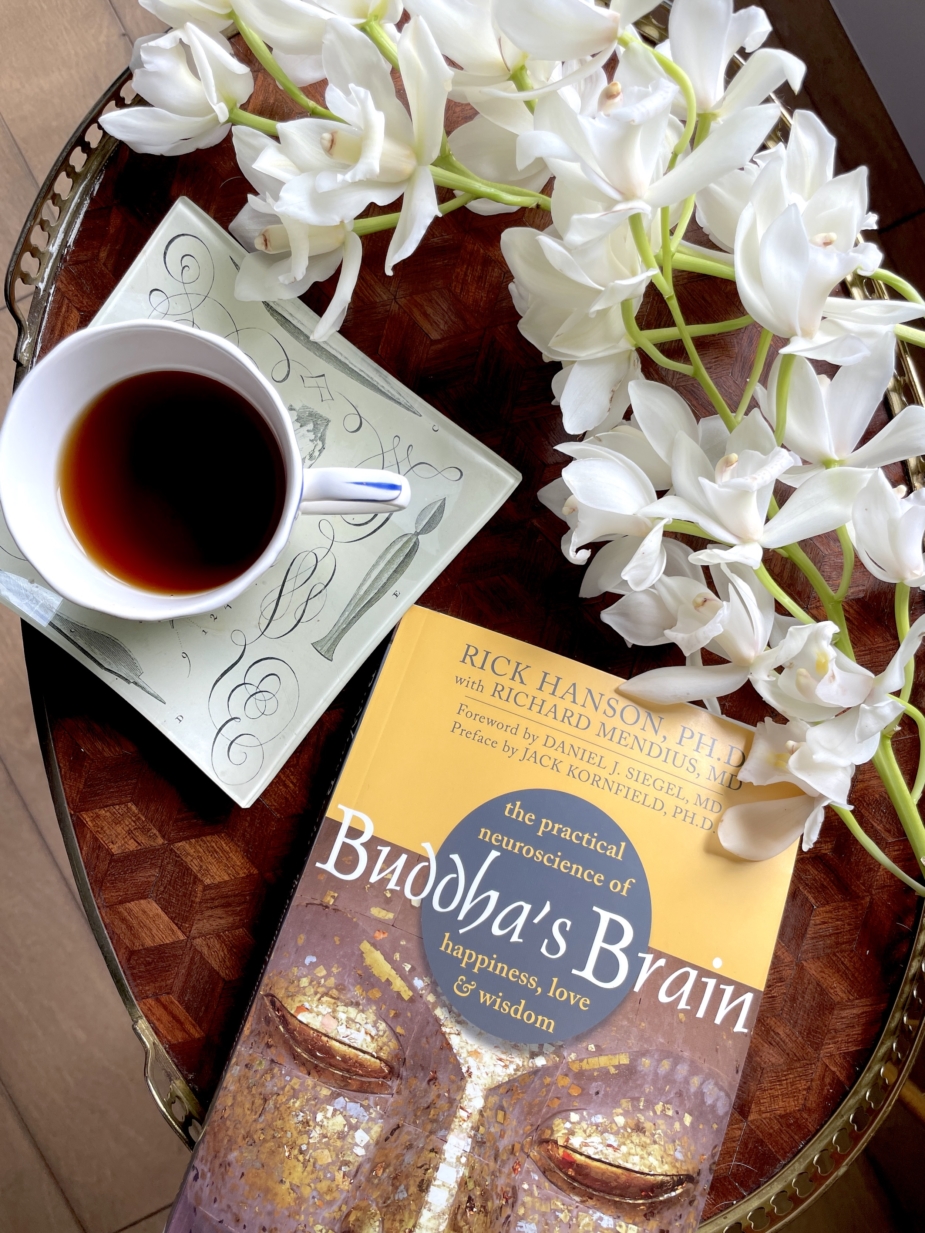
"Although your true nature may be hidden momentarily by stress and worry, anger and unfulfilled longings, it still continues to exist. Knowing this can be a great comfort."—Rick Hanson, PhD with Richard Mendius, MD, Buddha's Brain: The practical neuroscience of happiness, love and wisdom The mind's default is dialed to 'survive', not to thrive. However, the wonderful 'gift' that our brain has within it is the toolbox full of tools (i.e. capabilities) to learn the skills to change the dial to 'thrive'. There is a distinction, however slight between the brain and the mind, and while the two are often conflated, think of the brain as the physical entity within your skull and the mind, the conceptual idea maker that thinks due to the capabilities of the brain. With that said, the title refers to the truth of what will change your life for the better. The author of Buddha's Brain, Rick Hanson is a neuropsychologist shares along with the contributor, doctor in neurology Richard Mendius, "If I know one thing for sure, it's that you can do small things inside your mind that will lead to big changes in your brain and your experience of living . . . you really can nudge your whole being in a better direction every day. When you change your brain, you change your life." The secret that is often unknown unless we are taught, learn or observe it, is that we have to change the dial from 'survive' to 'thrive' and it is a muscle we have to keep toned. The question I have been asking for over two decades is How. And while I have been grateful to find books over the past twelve years, sharing so many of them and what I have here on TSLL, it was reading Buddha's Brain that provided the science that help me make sense of why my brain encourages my mind to default in certain ways that in hindsight are not helpful. (I will list the other previous books and their post/episodes below.)
1.Practice the three fundamentals of Buddha's teachings: Virtue, Mindfulness and Wisdom Since our brain and how it functions is the reason we suffer, yet we can change the brain, then we can also cure the suffering. Hanson summarizes what Siddartha who over two thousand years ago, at the time not yet called Buddha, discovered as he trained his mind "thus his brain" while understanding the causes of suffering, also discovered the "path to freedom from suffering". Let's take a look at what each of these three look like in everyday life:
2. Prolong feelings of happiness Did you know that as "you become a happier person, the left front region of your brain becomes more active"? Yep. And this is a very good thing because the left frontal region of your brain is where your skills for communication and thinking abstractly as well as understanding abstraction are rooted. When we consciously prolong and hold ourselves in moments of happiness, in other words, savor them deeply, we are actually rewiring our brain, and "when neurons fire together, they wire together". When we do this regularly, savoring what is good, what makes us happy, we are gradually, yet steadily and significantly changing our brains, and thus 'how we think' for the better.
3. You don't need more resources, you already have what you need The key to changing our brains is not to have more money, more time or well, anything outside of ourselves, which is very good news. The key is awareness, knowledge of how to change the brain, and the will and restraint to do so. So, look back to #2, that is a great place to start - savor the moments of happiness.
4. Understand why we 'suffer' when we step away from what we know From ending a relationship and moving on, to changing jobs and thus the colleagues you surround yourselves with, the first year at college away from your family after having lived with them your entire life thus far, leaving your home to travel and experiencing home sickness or even the Paris Syndrome, your mind defaults to 'surviving' and is not concerning itself with what is best for you to thrive. Within our brain, the Lizard brain as it is often called, when we separate from what we have done, when we choose to be independent and start something new or go somewhere new, our brain will push back and "produce painful signals of disturbance and see your choice as a threat". Thus the struggle with the mind, and the emotions, for a temporary period of time. Often, people don't understand such feelings are temporary and retreat to what they've known which is what the Lizard brain and brain set to the default of 'survive' wants you to do, but that is not thriving.
5. Understand how past negative experiences trigger the mind in the present more powerfully than positive memories "The brain is drawn to bad news." Velcro versus Teflon. Since our brain is set to default to survive, "the hippocampus makes sure [negative events are] stored carefully for future reference", our negative experiences tend to have more of an impact than positive ones unless we live consciously and understand why the brain does this. I found this section of the book incredibly powerful because once I understood why the brain kept pulling me back to worry, doubt, anger, sorrow, shame, any negative feeling to prevent me from stretching, changing, growing, progressing, even hoping, I could then take the wheel and pause its previously unstoppable progression toward an unhelpful state of mind. Keep the following quote in mind if you too have a mind that you might right now think cannot be controlled (the good news, and why I am writing this post, is that it can): "[The brain] highlights past losses and failures, it downplays present abilities, and it exaggerates future obstacles. Consequently, the mind continually tends to render unfair verdicts about a person's character, conduct and possibilities. The weight of those judgments can really wear you down."
6. Stop living in simulations Simulations are moments that the brain plays, or replays over and over again. Whether you are rehashing an argument or situation that didn't go as you had hoped, or thinking ahead to the future and imagining every possible outcome, every single one is a simulation and it pulls you away from the present moment. Hanson calls simulations 'mini-movies', and shares, "Mini-movies keep us stuck by their simplistic view of the past and by their defining out of existence real possibilities for the future, such as new ways to reach out to others or dream big dreams." Essentially when we let ourselves get lost and wander about in simulations we are putting ourselves into an invisible cage, and as Hanson rightly reminds, trapping ourselves in a life that is smaller than the one you could actually have.
7. Practice regular self-compassion We often know how to give compassion or extend compassion to others. It is important to note that compassion is not pity. Compassion instead involves extending "warmth, concern and good wishes". In 2016 I wrote a detailed episode (#122) sharing how to extend compassion to yourself, and why it is important. When you practice self-compassion you are creating a refuge, an island of calm as author Dr. Kristin Neff describes it for you to just be - stepping away from all negative and positive energy that you may have running in your mind, letting go of self-doubt and extending kindness to yourself. When we practice regular self-compassion, we are exercising self-awareness as we give ourselves what we need, and we are in that moment, in a state of true contentment because no matter what is swirling around us - in the outside world or within our mind, we are stepping back and finding stillness, observing, but not engaging, and providing care to ourselves so that we can respond well when we are ready, rather than reacting.
8. Stop throwing the Second Dart Oh, oh, oh! This was a big aha moment for me. Since we're talking about a Second Dart, there must be a First Dart, and there is. As Dr. Hanson explains, the First Dart is out of our control - a negative or unwanted experience happens, but it is HOW we react to the First Dart that creates a Second Dart, and we can prevent the latter from ever being thrown in the first place by becoming aware of ourselves and choosing to respond rather than react. The reason Second Darts need to cease being thrown is because they are often more hurtful, painful and destructive. And here's the best news of all, Second Darts are entirely avoidable and never unavoidable. In other words, we need to stop hurting ourselves in such a way that is entirely avoidable to do so.
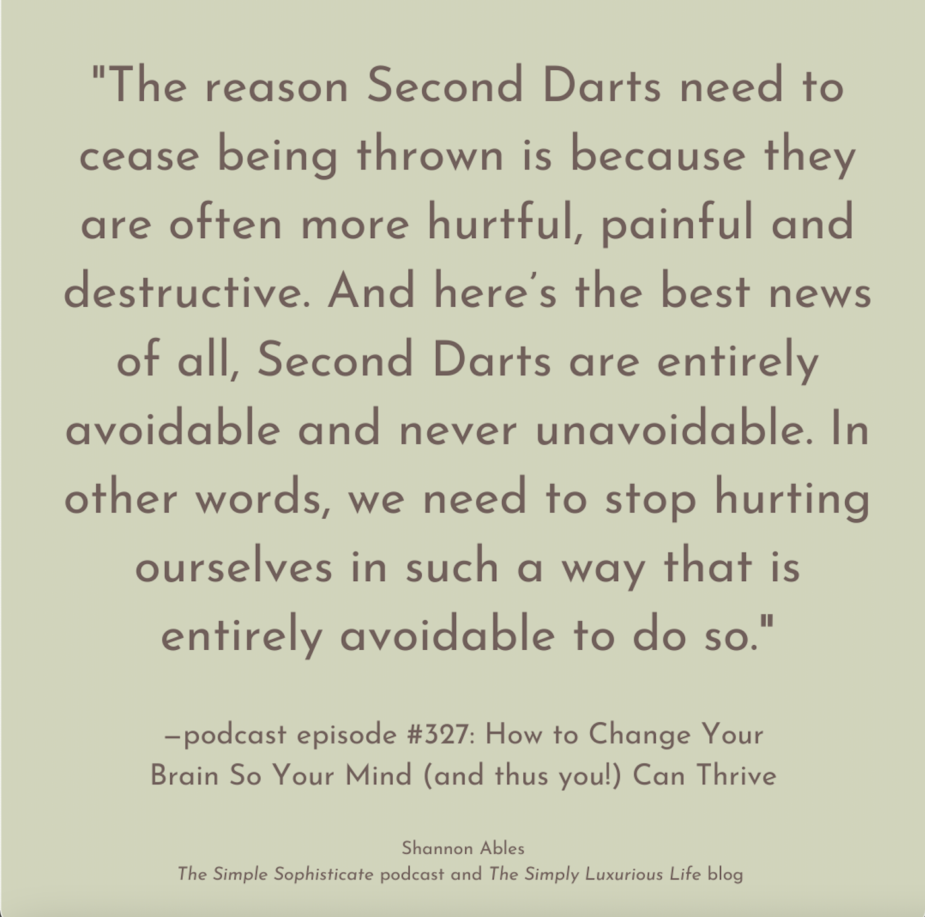 An example of what a Second Dart looks like: Your boss or colleague gives you the cold shoulder at work or doesn't consider your idea, or even invite you to share (first dart); immediately, in your mind, you rush to doubt yourself, become angry for being ignored and immediately assume their treatment must be all about something you did/lack/didn't do/are not enough of/etc. (second dart). The second dart lacks any evidence and takes in no context for any other extenuating circumstances, and causing unnecessary suffering. Dr. Hanson warns that sadly, some second darts can be thrown that are a result of a positive first dart that we, refuse to see as positive because we are doubtful and distrustful of ourselves. Example: you receive a genuine compliment and immediately question (in your mind) how it could be possible that someone sees something good, or you are fearful they will see through you. Again, you've caused yourself unnecessary suffering and you are creating neural connections that actually decrease positive growth in the mind. Long story short, refrain from throwing a Second Dart, ever, ever, ever.
9. Consciously create a life of more moments and experiences to savor every day Our brain has a negativity bias as discussed above. Understand this and you understand the vital importance of savoring, savoring, savoring. I often repeat in triplet this verb and it's not on accident. When we savor, don't just do it once, hold yourself in the moment, create an imprint of this awesome moment in your mind. Your brain is changing for the better, and thus your mind thinks better and your life changes for the better. Hanson shares ideas that I have a feeling will look quite familiar to readers and listeners of TSLL blog and the corresponding podcast. (1) look around you, throughout your day and your life for what you are grateful for, look for the good news in other words and so much of the good news is seemingly small and insignificant, but it is not insignificant at all - it is fuel to focus on to improve your life - beautiful scents, steady steps toward a goal, your favorite weather forecast, a healthy body!, clean water; (2) savor the experience for longer than you may have thought necessary - hold it in your awareness, drink it up - the longer you do, the "more neurons that fire and thus wire together, and the stronger the trace in memory"; (3) recall the journey of challenges you overcame to arrive where you are and are grateful to be - this rewires the brain, deepens savoring and adds to our list of what we are grateful for; and (4) take in all of the good sensations from past good memories and current ones - the warmth of the sun, the peace you felt when you heard the good news, the first time you laid eyes on [insert destination/person/outcome].
10. Understand the process to rewiring the brain so that the mind can thrive Begin the journey of mind transformation by keeping this truth in mind (pun not intended): it will take regular practice, but your mind will eventually change for the better. It will get rather difficult in the middle of the journey before it gets easier, so stick with it. Hanson delineates the four stages we move through (the goal being stage 4) to reach a state of full awareness and awakening of the mind, in other words, strengthening our mind's ability to thrive.
Hanson explains that we often get stuck in Stage Two, thinking it is impossible to move forward into stage three. Why? Often because we have the incorrect idea that the life around us must change to suit us, but that is faulty thinking. Remember, we live in awareness and how we respond to what we cannot control will determine our ability to either simply survive or thrive. It's important to state this again (as much for myself as for readers/listeners), don't throw the second-dart. Simply don't do it, and you're already well on your way to Stage Three. The goal for growth is to aim for Stage Three and Four, but if you are living consciously in awareness and practicing the above steps shared, you'll get there and your life will be be full of more 'happiness, love and wisdom'. "Over time, through training and shaping your mind and brain, you can even change what arises, increasing what's positive and decreasing what's negative. In the meantime, you can rest in and be nourished by a growing sense of the peace and clarity in your true nature." There is far more worth understanding and exploring in this book, Buddha's Brain. Today I wanted to introduce you to the fundamental science behind why our brains are not our friend if we don't know how they work and just let it lead us where it will. We cannot let that happen or we won't find true contentment. I think it is also important to point out, by focusing on the good, celebrating the awesome moments in life, Hanson explains, "[It] is not about putting a happy shiny face on everything, nor is it about turning away from the hard things in life. It's about nourishing your well-being, contentment, and peace inside that are refuges you can always come from and return to." When we understand how our mind is initially designed, but at the same time understand what it is capable of, we set ourselves free to no longer be stuck in a cage we have the key to unlock.
Books, Blog Posts and Podcast Episodes previous shared about the Mind
Petit Plaisir
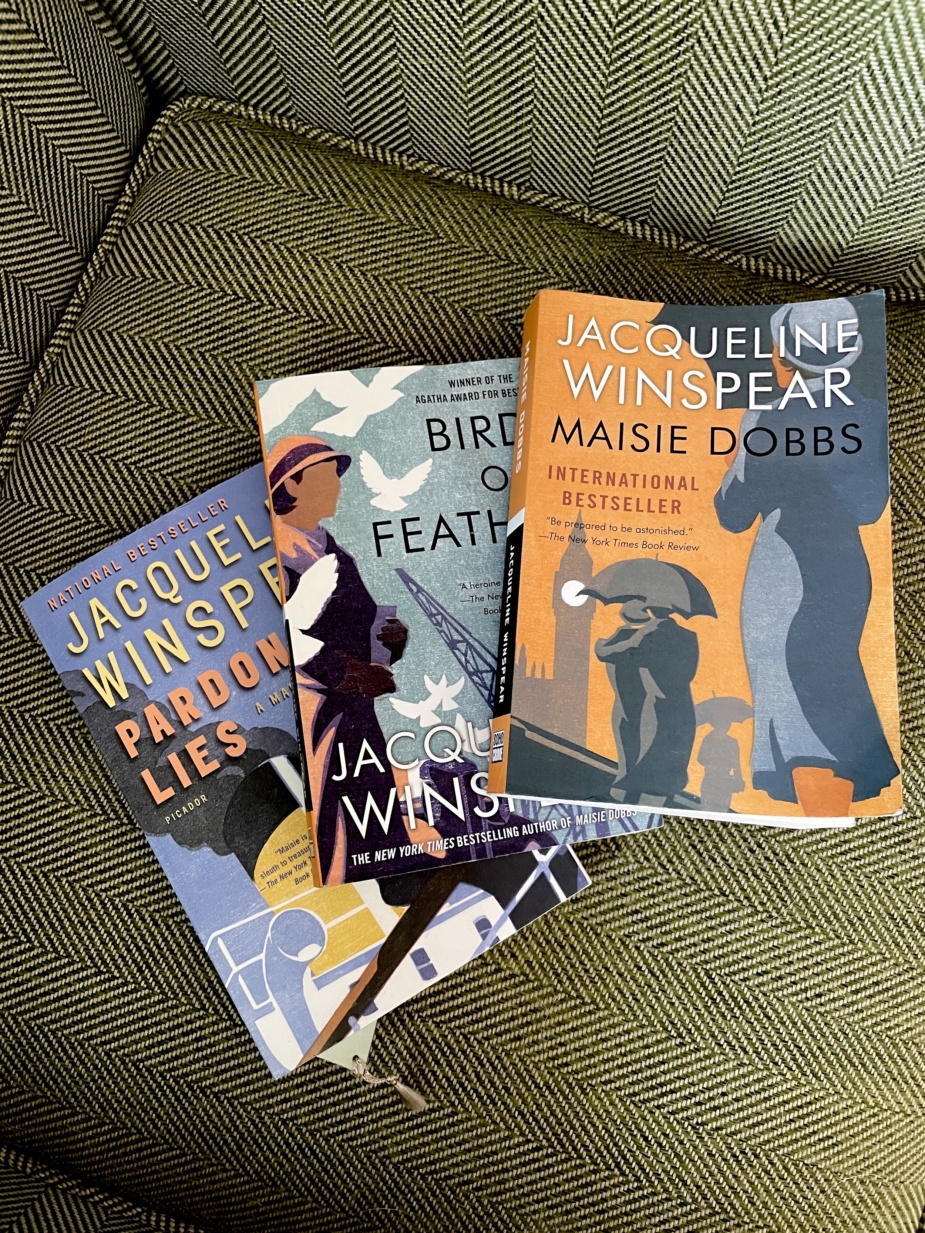 ~The Simple Sophisticate, episode #327~Subscribe to The Simple Sophisticate: iTunes | Stitcher | iHeartRadio | YouTube | Spotify | Amazon Music |
Sun, 15 March 2020
"You would think weightlessness is a good thing, but it's not. Because people weren't meant to float. Without gravity, we lose blood volume, bone density, muscle. Without it, we're untethered. So when you feel yourself being pulled toward something, it's not necessarily a bad thing. It may keep you centered. It may keep you safe." —Grey's Anatomy, season 16, episode #17, Shonda Rhimes Thoughts, thoughts, all sorts of thoughts. With an abundance of time on our hands as we stay home, if we have not exercised our brains in this way, it may feel uncomfortable, and in these times we find ourselves collectively, understandably unsettling. The above quote caught my attention this past week as it feels our attentions are being being pulled toward the necessities of life, what we sincerely need to simply live. Don't get me wrong, the past eleven years, economically, have been much needed and appreciated, and while each of our journey's is unique, perhaps we've forgotten what we truly need, what others truly need, to live well. At the moment, we are all being pulled to our homes, to our sanctuaries, to our immediate families with whom we reside with but perhaps never see often because of our busy schedules. Admittedly, some of our loved ones may be far away due to age, relationships, work, etc., but we at least have the phone, video chat and other technological ways of communicating. Becoming grounded in what roots us, is what reminds us of what truly is a priority in our life, helps us to make better decisions to remain true to those values when the choices are vast. And sometimes when the choices are so vast and so ubiquitous for such a long time, we would only be being human to lose sight of our roots. I am not suggesting that we need to have a pandemic to root us, but that is where we find ourselves, so I am determined to see some good in this perilous situation. There will be good that will come out of it when we come out of it on the other side, but as well, there is good we can partake in during this time of staying home. Today, while I had originally planned a different topic for the episode to be shared, I have decided to focus on something that will hopefully be helpful to direct our attention to, to elevate the time we have indoors, wanted or unwanted. The gift and mood lifting power of daily and weekly rituals. Under the umbrella of daily and weekly rituals lies our daily and weekly routines. Consciously creating routines in which we know boost the quality of our lives from our health, to our rest and rejuvenation to our productivity are ways to rest more easily which benefits our mind and well-being and decreases our stress. Each of these efforts strengths our immune system and ultimately strengthens our overall health, both physically and mentally. Today I would like to share with you rituals you can incorporate into your daily and weekly routine even while you stay home. Visit the full Show Notes on The Simply Luxurious Life — thesimplyluxuriouslife.com/podcast280 |
Sun, 12 January 2020
"Vitality means moving through life with energy and vigor, making deliberate choices and putting to good use the time and energy that we have been granted." —Twyla Tharp, author of Keep Moving: Lessons for the Rest of Your Life Knowing how to care for our body which we must not forget includes the mind is a lifelong course of learning. Beginning with the basics of how food is fuel and energy expends said fuel to understanding which fuel is best and how our body repairs itself and ultimately what the body and mind truly are capable of regardless of our age, understanding and then apply this knowledge will have a powerfully positive effect on the overall longevity as well as quality of our life. Highly decorated and revered American dance choreographer, Twyla Tharp released a new book this past fall, and as I appreciated her insights in her previously published book The Creative Habit, I was especially curious to read her new book Keep Moving as she herself is in her mid-seventies and more fit than most adults in their prime. However, what I quickly discovered is that Keep Moving is not only about the physical movement we must continue throughout the duration of our lives, but the continual movement of our thoughts, ideas and way of living and thinking about the world that is as well ever-changing and evolving. Today I'll be sharing 12 key factors for living and enjoying a physical and mental well-being for the entire length of your life. Visit the full Show Notes on The Simply Luxurious Life — thesimplyluxuriouslife.com/podcast273 |
Sun, 14 July 2019
Summer season offers a wonderful opportunity reboot our eating habits, remind us of the ease and deliciousness when we eat in season and highlight how eating can be pleasure-filled minus the any guilt. In today's episode of the podcast, this archived episode was in the top five episodes of the first season. Originally airing in the fall of 2014, I hope you enjoy discover the 10 Simple Ways to enjoy food and enjoy the body that takes you through each and every day. Visit the detailed, original show notes of episode #8
~SIMILAR POSTS/EPISODES YOU MIGHT ENJOY:~10 Ways to Enjoy Grocery Shopping ~A Capsule Menu: What It Is and How to Create Your Own ~How to Create an All-Around Healthy Life, episode #208 ~Subscribe to The Simple Sophisticate: iTunes | Stitcher | iHeartRadio | YouTube | Spotify
~Images via TSLL's Instagram from a recent trip to Bend's Farmer's Market - image 1 and image 3 |
Mon, 11 June 2018
~The Simple Sophisticate, episode #212~Subscribe to The Simple Sophisticate: iTunes | Stitcher | iHeartRadio | YouTube | Spotify
1. ExerciseJust as our overall health has pillars, so too does an effective exercise regimen. And in this case the physical health pillars are aerobic, strength and flexilibity. While the amount of days per week, even the amount of time each time we exercise varies from expert to expert, what they do have in common is insisting that it is regular and is at least moderately challenging. In episode #201 I detailed my approach to tailoring a strength training program, and in this post, I shared in detail how to get and stay in shape. The flexibility aspect is often the detail that is forgotten about, but as someone who for a period in my twenties did neglect this detail, it is one of the most enjoyable without less time and effort required (not to say certain yoga classes aren't challenging, but that is when they incorporate the aerobic aspect as well), and while I incorporate a weekly yoga class into my regimen, pilates or simply a stretch routine your follow at home (check out SELF magazine's list of the 21 best stretching exercises) would work just as well. ~To Get & Stay Fit: Keep It Simple, episode #190 2. NutritionAs we settle into the twenty-first century, as a population we are becoming more aware of how food works (or does not work well) in our bodies. The subsequent locally sourced restaurants that are on the rise around the country are challenging long-loved food chains to step up their game. At home, we too have more choices and more information to enable us to eat well each night of the week all the while amping up the flavor. Such a topic is something we've talked about quite a bit here on TSLL and the podcast (and in September TSLL's new vodcast is dedicated to sharing how to eat well while incorporating seasonal fare), so this isn't a big surprise. However, it is important to remember to listen to our bodies, be kind to our bodies and enjoy exploring with new flavors as well as becoming aware when our minds and bodies have become accustomed to something, such as sugar, that isn't serving us well. Below are just a few of past posts/episodes on this topic. ~Love Food, Love Your Body, episode #8 ~How to Treat Your Body Like a Temple 3. SleepA few weeks ago in TSLL's Weekly Newsletter I shared I was reading Arianna Huffington's book The Sleep Revolution, and specifically chapter 7 which focuses on master our sleep. In 2013, I shared nine benefits of enjoying a good night's sleep regularly, because aside from being absolutely pleasure-filled, it is the cheapest preventative medicine we can take to improve the quality of our lives. 4. SkincareOften our skin, once we've moved through puberty, is a mirror of the quality of our overall health. It reveals if the body needs more hydration, more rest, less alcohol, just to name a few tell-tale signs of how we live our lives. On the flipside, it also demonstrates to the world when these factors are balanced and tended too: a good night's sleep, protection from the sun, effective hydration and a balanced diet. Below are a few posts/episodes that dive deeper into creating a skincare routine that works and enables your best health to shine. ~8 Ways to Create Glowing Skin, episode #13 ~8 of My Favorite Skincare Products 5. Social ConnectionsOur relationships do not need to be many, but we do need to have them and they need to be healthy. Depending upon your temperament, you may have a multitude of friendships, familial relationships and connections you tend to in your career network that with each one strengthen your overall health. For others, it may be fewer, but each is deep and intimate. Whatever your preference, whatever works for the quality of life you need to be your best self, having a strong and healthy social life is fundamental for an overall good life. In episode #92, the concept of a strong social well-being was discussed. I encourage you to listen/read it as it simplifies our social life into three compartments: the relationship we have with ourselves, the platonic relationships we have with others and our romantic partnership. All three are unique, but each involve similarities seen in the others. 6. Mental Strength & AgilityAll five of the above pillars are essential, but without an awareness of how our mind works and how to ensure we are exercising it so that it works for us, not against us, we must keep it healthy. In episode #20, how to master your mind is explored in detail as 10 specific ways to do so are shared. From becoming fluent with our emotions, to understanding what you initially believed about what goes through your mind and the reality of what is going on to recognizing that the mind is a muscle and in order for it to function optimally, we must execise it regularly. Most likely, most, if not all of the pillars of good health are known to you, but as I was reminded last week, sometimes when our life is becoming frustrating in one arena, it can affect other arenas unconsciously. Sometimes all it will take to get back on track for our overall health is to take a moment and check each of the six pillars: How are they working? Have each been tended to recently and regularly? Perhaps today's episode will be the reminder to check, readjust if necessary or applaud yourself for how well you are doing and reward yourself. As the French say, à votre santé (to your health). May we embrace what is fully in our control and enable it to elevate the quality of our lives. ~How to Create an All-Around Healthy Life, episode #208 ~Why Not . . . Live a Long, Healthy Life? (3-part series) ~10 Simple Ways to Live Healthier
Petit Plaisir:~RBG, documentary filmhttps://youtu.be/biIRlcQqmOc Images: TSLL captured of the boys on a recent walk |
Mon, 26 March 2018
~The Simple Sophisticate, episode #201~Subscribe to The Simple Sophisticate: iTunes | Stitcher | iHeartRadio | YouTube
"Exercise should be regarded as tribute to the heart." —Gene TunneyDisspell the myths, push through the pain, discover what you do not know so the wrong information no longer holds you back. The concept of good overall physical health is a tripod: aerobic, strength and flexibility. A regular regimen which includes these three components will offer a firm foundation of lasting health. When we pair strong physical health with emotional and mental health, we are a mighty force with the potential to live well. As 2018 began, one of my resolutions was to improve the quality of my strength program. As I shared in TSLL's first book, in chapter six which focuses on health and beauty, my approach to creating a strength program is to hire a personal trainer for at least one session and hire them to help you design an at-home working routine. Having done this more than thirteen years ago, I realized I may need a refresher to my routine. The opportunity to work with an expert in the field of fitness as well as health and nutrition was something I didn't want to squander. Yes, I know the basics of health. As a collegiate athlete who has competed at the national level, and throughout my entire childhood, as well as coached varsity volleyball in high school, I knew the general concepts of proper form, body awareness and possible exercises. What I didn't have was accountability and someone to push me further than I would push myself. After all, having the energy and the time to accomplish what I want is typically the biggest obstacle I run up against, as I have a feeling most of us do, when it comes to changing the quality of our lives. It's not that we don't know better or don't want to make the change, it the ability (willpower, time, support) that is lacking. Wanting to gain as much benefit from my sessions as possible, I had a list of questions in my mind to address my concerns and questions as well as a clear set of objectives I hoped to attain. Objectives:
Questions & Concerns:
For ten weeks, each Monday, I met with my personal trainer at a local gym. For an hour we went through a training session which was different each week. Later in the week, I would take an hour at home and follow that particular week's strength routine, fitting in a total of two strength routines each week. Part of the reason I hired the trainer for 10 sessions was to accomplish my third objective: to create a habit. Sure enough, now that I have been on my own for two weeks, every Monday afternoon or evening, I carve out 1 hour and get to work. I have chosen a day that works best with the rest of my schedule (blogging and teaching, as well as my walking schedule with the dogs). I have also found tending to my first strength routine of the week on Monday is a wonderful way to start the week as I feel I have accomplished something that does take a lot of willpower, and at the beginning of the week, I have far more than I would have on even Tuesday, let alone Wednesday or Thursday and especially Friday. The component my trainer made available through our sessions together was her knowledge of eating well paired with proper fitness. As a nurse and health coach, she answered many questions that I raised as well as offered a multitude of different ideas for eating well and what to eat directly before and after my training sessions (good carbs and protein). The benefits of regularly incorporating a strength routine into your overall health regimen are immense now and throughout your entire life (US Supreme Court Justice Ruth Bader Ginsburg at the age of 85 just released her new book The RBG Workout which include many of the exercises in my new workout - planks anyone?), and below are the most important reasons to create a plan that is effective and consistently adhered to as reported by the Mayo Clinic.
The truth about about strength training and losing weight is that as The New York Times reported in 2015, if we do not pair our physical fitness — both aerobic and strength training — with a diet of moderation and balanced nutrition, we thwart the positive results that can be possible. (read: How to Enjoy Eating Every Day and Love the Results, episode #165) What does my new strength training entail? Below are the components.
~Norman as weight on the "sled". Counter-clockwise beginning in the lower lefthand corner: (1) First go-round, Norman are you ready? (2) after two lengths of sliding - I've got this; (3) Are we done?; (4) I am exhausted as you look, but anytime you want to push me again, I am here.~ Results and Outcome Thus Far The positive changes I have seen 12 weeks into my new strength training are gradual, but promising. While I do not get on a scale as muscle mass weighs more than fat, I instead pay attention to how my clothes fit: are my pencil skirts tight or do they easily slip on? which loop in my belt am I using? Can I fit comfortably into my jeans? While our bodies do fluctuate throughout the month, understanding our body's rhythms and how we feel after eating certain foods is part of understanding and determining whether our bodies and thus our health is on track. One improvement I have noticed is that my ability to hold poses in yoga has improved which is something I have always wanted to do since I began yoga more than seven years ago. And one of my fears was not realized (bigger shoulders). Yes, my shoulders and arms are slightly more defined, but they are no larger than they were when I wasn't doing my strength training. With the attention to a well-rounded arm strength routine, my entire arm is more capable of holding my body. One detail that was an important point for me to learn was that my body will swell up approximately 2-3 days after a strength training session. While I knew it would be sore (and it was especially so after the first week's session), I didn't realize it was also sweeling due to the body and muscles attempting to heal itself. It is important to note this temporarily change because it will feel (because it is) as though your muscles are expanding, but they will heal and in 2-3 days, the swelling will be gone. Since I keep my weights small (5lb for arm workouts and use high repetition), bulkiness is not something to fret about as was one of my questions from the beginning. The key to losing inches or maintaining the weight we have if that is the goal is to eat smart but not deprive ourselves and workout consistently while mixing up the routine we do each time to keep our muscles on their toes. I don't know if I'll ever fit into size 4 (US) jeans again as I am currently between a 6 and an 8, but the size doesn't matter so much anymore as my goal is to keep my body healthy and strong so I can be hiking, paddleboarding, taking yoga classes and cross country skiing well into my 80s and 90s, as well as go on lengthy walks with my dogs. I hope my experience has helped you, and while this is my tailored routine based on my time with a personal trainer, I do encourage you to seek out an expert in fitness and nutrition who can give you a personal plan for strengthening your body as well. As an investment in our health, I am confident you will see great value in receiving answers to questions you may have regarding your health and fitness journey. ~SIMILAR POSTS/EPISODES from the ARCHIVES YOU MIGHT ENJOY: ~Why Not . . . Lose Those Last 10 Pounds? ~To Get and Stay in Shape: Keep It Simple, episode #190 ~15 Things to Do to Not "Feel Fat", episode #52 ~Learn more and sign up for TSLL's Weekly Newsletter Petit Plaisir~Paris in Stride: An Insider's Walking Guide by Jessie Kanelos Weiner and Sarah Moroz~Learn more about why I love this book in a full review here. ~Sponsor of this week's episode:
|
Mon, 26 February 2018
 ~The Simple Sophisticate, episode #197~Subscribe to The Simple Sophisticate: iTunes | Stitcher | iHeartRadio | YouTubeAs a young girl I took piano lessons, and I will admit, it was not the greatest joy of my life. A timer would have to be set for me to sit down for even 30 minutes to practice, and even then I would get up from time to time to check and see how much more time I had to play. So, no, I was not someone who found joy in playing; however, when my mom would sit down and play and let the notes ring melodically throughout our home, I thoroughly enjoyed listening. We still have that piano, and from time to time I will get the opportunity to hear her play and watch her fingers dance across the keys. There is a tranquility that is shared when such harmonious tunes without lyrics are played. To my ear, it is quite peaceful. Perhaps that is why as well, I am drawn to jazz, as I do prefer music without lyrics when I am working, relaxing and simply going about my day. I enjoy bringing my story to the notes, rather than hearing someone else's. Perhaps that is a lack of imagination on my part, but when there are no words, the rhythm is mine to dance with and let my mind wander. Having always loved jazz since I was a teenager, I have since begun to welcome more classical music into my life and regularly beginning this past fall as I shared in this post (episode #187). Many of my students over the years have been actively involved in the symphony and orchestra, and successfully so, so I do find myself learning from them as I am by no means savvy when it comes to music.
1. Reduce stressIf you find listening to classical music relaxing, then it can reduce your stress levels. Upon listening to classical music, your body releases "pleasure-inducing dopamine and inhibits the release of stress hormones, all of which generates a pleasant mood". Now, the key is to understand what you find relaxing, make it a regular practice and observe your body and mind relax which will then enable you to think more clearly and thus make better decisions.
2. Increase your ability to think abstractlyThe Mozart Effect, as it was coined in 1993, was discovered by Dr. Gordon Shaw of the University of California-Irvine to cause a temporary spike in an individual's IQ after listening to Mozart. While the findings need to be clarified: no, listening to Mozart doesn't make you smarter, but it does, Shaw states, "warms up the brain's ability to think abstractly".
3. Heighten EQ (emotional intelligence)In 2001 Southern Methodist University shared their findings of their study revealing participants were more "expressive and effusive with their comments, [and] . . . more forthcoming as well." Perhaps when we choose to listen to classical music as we relax, our walls come down a bit more, we are more willing to be vulnerable and less quick to react.
4. Increase focusA study done in France published in Learning and Individual Differences revealed that students who listened to a one hour lecture with classical music playing in the background scored better on the corresponding quiz than those who did not listen to music. Why? The researchers proposed that "the music put students in a heightened emotional state, making them more receptive to information . . . It is possible that music, provoking a change in the learning environment, influenced the students’ motivation to remain focused during the lecture, which led to better performance on the multiple-choice quiz”.
5. Fall asleep more quicklyThe University of Toronto discovered that when classical music is played when you settle into bed, participants in the study were able to fall asleep more quickly and stay asleep longer. Why? The study found that the music by Bach, Brahms, Handel, Mozart, and Strauss offered "rhythms and tonal patterns that create a meditative mood and slow brainwaves". The inclusion of listening to classical music in my everyday routine has become a form of simple self-care. Having a sound mind to navigate successfully through the day is an invaluable tool, but it is one that can easily deteriorate if we do not tend to it. Many readers shared their favorite classical radio station (many of which have free apps available), and I have listed them below. An unexpected benefit I am finding is listening to the hosts of each of the programs whether I am listening to KUSC.org or WRTI.org as they speak about each song, often share the history and other intriguing information. I may never pick up a flute, a violin or an obo, but I certainly am finding I appreciate even more those who do and those who have written the music creations.
Classical music stations:
I have compiled a Luxurious Classical Music playlist on Spotify (of which there are many others to find as well) that plays
The Playlist: Luxurious Classical Music (below are just a sampling of the tracks):
Petit Plaisir:~Mozart in the Jungle, season 4
Sponsors of this week’s episode:
Image: Katowice concert hall, Poland Sources of research: LiveStrong, USC News, WQXR.org |
Mon, 8 January 2018
~The Simple Sophisticate, episode #190~Subscribe to The Simple Sophisticate: iTunes | Stitcher | iHeartRadio | YouTube I try to get 20 minutes of cardio at least three times a week. Then I do anywhere from 30 minutes to an hour of old school lunges, weights, squats, and bicep curls — it’s just stuff that I learned 30 years ago. Once a week, I try to go on a hike with a friend so I combine exercise and girlfriend time — it’s the best multitasking. The fitness routine we create for ourselves should be enjoyable, consistent and paired with a well-balanced diet which includes moderation not deprivation. The reality is our weight has far more to do with what we eat than what we do for exercise as was reported in The New York Times in 2015, so why not create a fitness approach we look forward to? Below are a few ideas for staying fit while keeping it simple. Let the Outdoors Be Your GymNot everyone lives in a town like Bend, Oregon, with trails just blocks from our front doors and massive dog parks to hike the forests with our furry children. So heeding this suggestion will be dependent upon where you call home, but even if you live in a bustling city, especially New York or any city with public transportation, walking will add up. And walking counts. Find a Class You Enjoy and Go RegularlyThe combination of aerobic, strength and flexibility is the tripod of good fitness, so whether you enjoy a circuit training class with a particular instructor, a pilates or yoga class for deep stretching as well as mental agility, find a day of the week and time that works best and get into a regular schedule of attending. Another motivator is to buy a pass for a month or a pass of 5-10 classes. Not only will you pay less as they are often reduced when sold in multiples, but you will not have the excuse of not having the money and knowing you've already paid will motivate you to not let your money go to waste. Do What You LoveIf you enjoy working out with others, join a group that cycles weekly and explores the many trails around the area. If you enjoy working out alone, grab your shoes and earbuds and star running or walking. During the summer months I love to paddleboard with Norman, and while it can be a leisurely pursuit, I try to make it a workout when we go upstream and then relax on the ride back down as we move with the current. Walk with IntentionIf you do like to walk for exercise, as I do, walk with purpose. In other words, strolling will not keep your heart rate up high enough to burn the calories you are hoping for. I drive some of my walking companions up a wall sometimes, but to me a walk is an opportunity to get a nice workout in, and if I haven't gotten my workout in, I am going to want to pick up the pace. Having walked two marathons, it is possible to derive an amazing aerobic fitness routine solely from walking, just walk with intention. ConsistencyAt the core of any successful venture or change in habits and behavior is to make your fitness routine consistent. From engaging in an aerobic activity for 30-40 minutes 3-5 times a week, strength training twice a week for at least 20 minutes and taking time for your body to truly be stretched well once a week, schedule these appointments as you would a necessary doctor's appointment. Water, all the time, WaterI am on a constant quest to drink more water. My efforts include making it my drink of choice when I am not sipping on tea, taking my 24 oz Hydroflask with me when I go to work, yoga class and travel and doing my best to drink the entire bottle before I return home. Part of why we reach for food we really don't need is because we are thirsty and the more we stay hydrated the more we will have an honest gauge of what our body is craving. Let Curiosity Be Your GuideWhen traveling, give yourself extra time to explore on foot, climb that famous trail or step off the metro or the tube one stop too early and walk the rest of the way to your destination. Again, you will be doing something you enjoy and are curious about and all the while getting in a few extra minutes of cardio. The bottom line to take away as many of us are making resolutions to improve our health is that what we eat is a priority that can derail our fitness efforts, so eat well, plan a regular well balanced fitness program and enjoy going about your everyday knowing that in time you will see the results you were looking for. ~Peruse the HEALTH posts in the Archives to find posts targeted on exactly what you are looking for (eating well, fitness, yoga, losing those last 10 pounds, etc.) ~SIMILAR POSTS FROM THE ARCHIVES YOU MIGHT ENJOY: ~Why Not . . . Feed Your Body Well? ~Love Food, Love Your Body - 10 Simple Tips (episode #8) ~Why Not . . . Lose Those Last 10 Pounds? ~Design an At-Home Strength Training Program That Works, (episode #201) Petit Plaisir~French Onion Soup - click here for the recipe |
Mon, 24 July 2017
~The Simple Sophisticate, episode #165~Subscribe to The Simple Sophisticate: iTunes | Stitcher | iHeartRadio
"Right food, right place, right time. It is my belief . . . that this is the best recipe of all. A crab sandwich by the sea on a June afternoon; a slice of roast goose with applesauce and roast potatoes on Christmas Day; hot sausages and a chuck of roast pumpkin on a frost-sparkling night in November. These are meals who success relies not on the expertise of the cook but on the more basic premise that this is the food of the moment - something eaten at a time when it is most appropriate, when the ingredients are at their peak of perfections, when the food, the cook and the time of year are at one with each other." —Nigel Slater in The Kitchen Diaries: A Year in the Kitchen with Nigel Slater Being able to have what we want is not always a blessing. But having what we need is imperative to our well-being, and what we need is nutrient-rich food and when it tastes its most delicious, it is all the more attractive to enjoy. Supermarkets have made the food we love available for consumers year-round, but we all know a tomato in December here in the states tastes nothing like its summer counterpart. Instead pick up an apple or if you are in Hawaii or on the west coast, a rambutans (seasonally available September through March). Satisfy your sweet-tooth and eat what is readily avilable and full of flavor. I can only speak for myself, but part of the reason I fall into the habit of eating the same vegetable, fruit or meal year round as a go-to is it's easy, I think it saves me time and I don't have to think about it. And while it does ease the need to have to figure out what to eat each night or for lunch, it isn't actually the best for my health. Initially, it will take time and our full attention to learn what is in season and know what to do with it when we get it back to our kitchen, but once we gain this knowledge, it becomes a habit. In essence, we are becoming our own home chef capable of cooking anything with fresh ingredients and what is left in the refrigerator. This feat may sound impossible, and you may be someone who doesn't love to cook, but most of us eat at home a majority of the time, so it doesn't have to be a passion and you don't have to be a foodie to learn the basics of seasonal cooking. Your health, your waistline and your peace of mind will thank you. 1. Shop at small local shops, markets and specialties businesses A fish market, a cheese shop, the local bakery, the farm stand, your neighbor's petite produce stand, choosing to frequent such food options rather than the giant supermarket will make the shopping experience far more pleasurable and the food you purchase will be fresher and most likely in season. As well, you can begin to establish relationships with the experts who run each business, ask them questions and learn about what you will be eating and feeding those you love. 2. Shop once a week for stock up items in the épicerie, but day to day for fresh food "[The Kitchen Diaries] is a gentle plea to buy something, however, small, each day, to take time to shop, to treat it as a pleasure rather than a chore." —Nigel Slater The weekly capsule menu is something I believe works wonderfully for planning the meals for the week and the ingredients, which should be versatile, for each recipe item. And while I typically do a weekly shopping run to my farmers market or Trader Joe's, I do stop by the local produce stand or the bakery, etc. throughout the week to ensure I have the freshest ingredients. 3. Curate a kitchen space that works well, no fancy gadgets necessary As anyone who has traveled in Europe and England will attest, kitchens are very small even in the most grand of cities, and while many people especially in Paris and London and well, name your favorite destination, will want to dine at the many restaurants, cooking in a small kitchen is very possible. So don't let the size of your kitchen be the roadblock. I always think of Rachel Khoo in her little Paris kitchen cooking away in minimal space. Most importantly, regardless of space, make sure you have the basic tools and essentials as well as a well-stocked épicerie. See my detailed list for both here. 4. Plant a garden, no matter how much space you have. Whether you have a large plot of land or a window sill, plant what you can, what you're curious about and with each year, add something different, try something new. As well, try to plant something to be enjoyed in each season: rhubarb in the early spring, strawberries in late spring, fresh herbs all summer (sometimes year round depending upon where you keep them), squash and pumpkin in the fall, the possibilities are endless. Have fun and play in the dirt. 5. Educate yourself on seasonal offerings Whether from books, cookbooks are a delight to read, and you learn as you peruse each recipe especially if it is organized seasonally, or textbooks, food television programs or your local farmer, become curious about what is in season where you live. Choose to see it as an adventure of discovery. When I approach cooking this way, I don't kick myself if something doesn't work out, I celebrate the opportunity to try and regardless the food (because it's in season) is usually delicious (again, not because of my prowess, but because seasonal food is good all on its own). I found this very helpful online source for all fifty states. You simply choose your state, the season and voila! It shares not only the produce that should be available and at its freshest, but recipes as well. ~Eat the Seasons (a helpful guide for North America and United Kingdom citizens) ~Epicurious is also a worthwhile resource for recipes on seasonal food, organized by the season 6. Discover the power of food The list is long of which to read to learn about what is the best balanced diet and how and where to find the nutrients you seek, but understanding where you can find fiber (grains - the less processed the better) and understanding exactly what an avocado gifts to your body encourages you to step toward these foods with curiosity and not fear that you are going to be eating too much fat or calories. With these two items, they will satiate you long before the calorie count is anything to worry about, and fat isn't bad, remember this. "Roast rhubarb on a January morning; 'pick-your-own' strawberries in June: a piece of chicken on the grill on an August evening . . . This is more than just something to eat, it is food to be celebrated, food that is somehow in tune with the rhythm of nature. Quite simply, the right food at the right time."— Nigel Slater 7. Have a plan The primary reason I have created seasonal capsule menus is to provide a starting point or foundation for how to cook seasonally in fall and spring (summer and winter will be coming in my second book to be released in 2018!). With time and practice, you'll begin to incorporate your favorite ingredients and discover which recipes you like and even create your own. 8. Keep it simple Truly, the best meal you will make on a regular basis should be simple, because again, it is the food, the quality of food, that makes it so. For example, my go-to recipe for vegetables year round is to roast them. Name the vegetable and for the most part, I will roast it. Asparagus in the spring, add some lemon and a bay leaf; zucchini and squash in summer and fall - olive oil drizzle, salt and pepper - 400 degrees for 30 minutes; broccoli in the fall through early spring. Oh, and I just tried roasted cauliflower finished in the last two minutes with Gruyère and Parmesan - delicious! 9. Try learning and incorporating a new habit each week Perhaps one week you will learn and become confident with roasting, maybe the next week making your own herb butter, then the next a beloved go-to vinaigrette. Whenever you eat out and you taste something you love, ask the chef how they made it (or the waiter/ess to ask the chef). I recently had the most delicious huckleberry ricotta mousse, and out of curiosity (as huckleberries have a very limited season) I wanted to remember this recipe for the next year. They happily shared the ingredients, and I went online and found a ricotta mousse recipe from a trusted source and adapted it to my taste. (Check out my recipe for Homemade Ricotta Mousse with Fresh Berries here.) 10. Dine at farm to table restaurants One of the best ways to learn about seasonal food is to try it as it is prepared by well-trained chefs. More and more restaurants are following this model of seasonal recipes and in so doing are teaching and informing their patrons how to cook delicious food at home. Learning how to feed our bodies well takes time, but hopefully with these tips, the journey through the seasons will be pleasurable, delicious and an experience to savor rather than a task to complete. "The doctor of the future will give no medication, but will interest his patients in the care of the human frame, diet and in the cause and prevention of disease." ~Thomas Edison ~Below are a handful of seasonal cookbooks that come highly recommended, some new, some time-tested.
~SIMILAR POSTS FROM THE ARCHIVES YOU MIGHT ENJOY: ~Farmers Markets: How to Make the Most of Your Visit No Matter Where You Live ~A Capsule Menu: What It Is and How to Create Your Own ~Why Not . . . Feed Your Body Well? ~Why Not . . . Keep It Simple in the Kitchen? ~Why Not . . . Cook with Olive Oil? ~Why Not . . . Buy Local Produce? ~Why Not . . . Treat Your Body Like a Temple?
Petit Plaisir:~The Kitchen Diaries by Nigel Slater
Today's sponsor of The Simple Sophisticate was Trunk. A journaling app to keep your thoughts saved recorded and a daily habit. Try it free for 30 months without having to share your buying information. If you like the app after 30 days, you can buy it when prompted. Currently available on iTunes - find it here. |
Mon, 23 January 2017
~The Simple Sophisticate, episode #139~Subscribe to The Simple Sophisticate: iTunes | Stitcher | iHeartRadio"When we take the right to rest, when we make rest fulfilling, and when we practice rest through our days and years, we also make our lives richer and more fulfilling." —Alex Soojung-Kim Pang, author of Rest: Why You Get More Done when You Work LessCharles Darwin partook in regular 10 miles walks, Alice Munro walked three miles each day, Winston Churchill engaged in painting, Lin-Manual Miranda took his dog each Sunday for walks through the parks in New York City, J.R.R. Tolkien and Ray Bradbury took daily afternoon naps, workers at Bletchley Park during WWII chose chess as a favorite pastime and associate justice of the United States Supreme Court Elena Kagan boxes regularly with her personal trainer. Initially when the word 'rest' is mentioned, we may think of sitting on the sofa, flipping through channels, but the difference between mindless rest and deliberate rest is that it "enables productivity". When we truly rest, our minds are not actually stagnant. In actuality, we are enabling them to do what they need to do, work through, dispose of, find and reach understandings and connections that when we are active at work, it is unable to do completely. The difference between mindless and deliberate rest is what you are feeding your brain. Sitting down and watching a thoughtful, engaging film can absolutely be deliberate rest. It may offer ideas and insights that eventually help us make connections we didn't see prior to viewing of the film; the key is to feed our minds well. Give it quality fuel and quality results have the possibility of being produced, even while we sleep. Recently, Alex Soojung-Kim Pang's new book Rest was released, and contained inside the covers is a wealth of research, seemingly infinite anecdotes from historical and current individuals that reveal the power of deliberate rest being incorporated into our daily lives. Throughout today's post, I will be sharing many different quotes, and unless otherwise attributed, they are pulled from the pages of Rest. As we begin 2017 and we look to the future we wish to build for ourselves, it may appear as though we have much to do in order to accomplish what we have placed on our list of resolutions or goals. But in order to be successful in whichever destination we pursue, the concept of quality over quantity guides the way. How is that possible? How can we do less and actually attain more? By tossing what the zeitgeist portrays as the "right way" to achieve success out with 2016. "Today, we treat being stressed and overworked as a badge of honor, a sign of seriousness and commitment; but this is a recent phenomenon, and it inverts traditional ideas of how leaders and professions should behave under pressure. For most of history, leaders were supposed to appear calm and unhurried; success began with self-mastery and self-control." ~For more in-depth discussion on each of the points discussed below, be sure to tune in to the podcast. Benefits:1. Helps to organize your life 2. Cultivates calm in your life 3. Strengthens your will-power and self-control 4. Increases your confidence 5. Increases emotional intelligence and engagement 6. More time is given as boundaries are made firm and clear 7. Increases success and accomplishment, aiding you in reaching your full potential 8. Live a long, healthy, invigorating life 9. Helps you live a simply luxurious life "It creates a life that's rewarding while it's lived, a life that has purpose and pleasure, work and reward, in equal measure. And that life feels complete and well-spent at the end." How to welcome deliberate rest into your life:1. Make rest a priority "Taking rest seriously also helps bring more of your life into clearer focus." 2. Spend only 4-5 hours each day doing strenuous work 3. Establish a consist morning routine "My morning is all about stilling the outside world so my mind can soar." —Scott Adams, the illustrator and creator of the comic strip Dilbert 4. Set clear boundaries between work and rest "A day that starts with work creates rest that can be enjoyed without guilt. When you start early, the rest you take is the rest you've earned." 5. Take regular walks 6. Nap regularly and nap well "The most obvious benefits of napping is that it increases alertness and decreases fatigue . . . but regular naps have other benefits . . . improve memory . . . [and] consolidate things you've just learned." 7. Enjoy a regular, deep night's sleep 8. Detach and take that vacation 9. Exercise regularly "At first, researchers mainly investigated the benefits of exercise for healthy aging, but studies now show that for people of any age, gender, or athletic ability, exercise can increase brain power, boost intelligence, and provide the stamina and psychological resilience necessary to do creative work." 10. Cultivate a hobby you love and that challenges you Perhaps when you read #2 on the list above, you said to yourself, nope, that will never happen, not in my world, not in the job I have to do every day to earn my paycheck. And on the surface, you are absolutely correct. But what if you could look at the job you go to each day and redesign your day? What if you could schedule your day so that you did tend to the most strenuous demands at the beginning and then schedule meetings, projects and activities toward the tail-end that allowed you to not tax your mind directly as much? Understandably, what job you do and for whom you work and the expectations will play a significant role. What I appreciated upon reading Rest is that it validated what I already felt regarding the productivity of my work. When I worked at my best, when I felt my most exhausted, it gave me a reason as to why. It helped me understand my mind, my body and the benefits of what I am doing and what I need to make sure I continue to do and what I can begin to let go of as it no longer serves me or the quality of life I am trying to cultivate. Saying no to what no longer serves the simply luxurious life you are building becomes easier when we have science to explain what works best, but we also have to understand what type of life we want to build, and when we know that and believe it to our core, the saying of "no" and the incorporation of deliberate rest into our lives becomes far easier. And that is when our lives begin to truly blossom. We don't have to look busy to gain approval. The gift of living well is that our lives often will look paradoxical: How can she/they/he live such a life and not be exhausted/stressed and have time to enjoy, play and partake in the pleasures as well? But the reality is, it is indeed possible when we choose to live consciously and thoughtfully. "A life that focuses on what matters most, makes time for rest, and declines unnecessary distractions may look simple on the outside, but from the inside it is rich and fulfilling." Deliberate rest paired with deliberate work is a partnership: "One provides the means to live, the other gives meaning to life". "When we treat rest as work's equal and partner, recognize it as a playground for the creative mind and springboard for new ideas, and it as an activity that we can practice and improve, we elevate rest into something that can help calm our days, organize our lives, give us more time and help us achieve more while working less."~SIMILAR POSTS FROM THE ARCHIVES YOU MIGHT ENJOY: ~15 Everyday Habits to Live a Life of Contentment ~10 Things People Who Have Found Contentment Understand About Uncertainty ~Relax: 21 Ways to Know You're Doing Just Fine in This Thing Called Life Petit Plaisir:~Equipment silk pajamas, Lillian striped washed-silk pajamas - 50% off at Netaporter ~use promo code EXTRA40, at Equipmentfr.com Image: Vogue UK |
Mon, 5 September 2016
Have you resigned yourself to the idea that at a certain age things (not so great things) just happen to us? Well, no more! Inspired by Dr. Frank Lipman's new book 10 Reasons You Feel Old and Get Fat and How You Can Stay Young, Slim, and Happy! discover the 10 myths that we need to relinquish and how we can change the way we are living right now to make a tremendously positive difference for the rest of our lives. In this week's Petit Plaisir, discover a Decadent Fig Appetizer. With only four ingredients and 15 minutes, you will have an appetizer to cause your tastebuds to dance. |
Mon, 18 July 2016
So much of our happiness is entirely in our control, and with these 11 simple ways to immediately shift your mood from a frown to happiness, based on a handful of scientific studies, you can begin to change the quality of your days in an instant. In this week's Petit Plaisir, two simple ways to enhance your everyday experience. First TSLL Notepads with exclusive full-color Inslee Fariss illustrations are now available at The Simply Luxurious Life: To-Do lists, and To Market, to Market (grocery list). Also, Martha Beck's The Joy Diet book is recommended. |
Mon, 10 August 2015
The idea of "feeling fat" is often rather a feeling of knowing we aren't taking care of our body as we should and knowing we can feel better in our own skin. In today's episode, Shannon shares 15 simple ways to get back on track when it comes to eating well without going on a "diet" as Americans use the term. In this week's Petit Plaisir, Shannon reviews Harper Lee's Go Set A Watchman. |
The Simple Sophisticate - Intelligent Living Paired with Signature Style (health)

Categories
lifestylemoney
fashion
general
food
relationships
beauty
holidays
style
decor
etiquette
technology
dating
clothing
news
happiness
health
finances
self-help
feminism
french living
communication
inspiration
self-improvement
cooking
French-inspired
podcast
travel
entertaining
Archives
AprilMarch
February
January
December
November
October
September
August
July
June
May
April
March
February
January
December
November
October
September
August
July
June
May
April
March
February
January
December
November
October
September
August
June
May
April
March
February
January
December
November
October
September
August
July
June
May
April
March
February
January
December
November
October
September
August
July
June
May
March
February
January
December
November
October
September
August
July
June
May
April
March
February
January
December
November
October
September
August
July
June
May
April
March
February
January
December
November
October
September
August
July
June
May
April
March
February
January
December
November
October
September
August
July
June
May
April
March
February
January
December
November
October
September
August
| S | M | T | W | T | F | S |
|---|---|---|---|---|---|---|
| 1 | 2 | 3 | 4 | 5 | 6 | |
| 7 | 8 | 9 | 10 | 11 | 12 | 13 |
| 14 | 15 | 16 | 17 | 18 | 19 | 20 |
| 21 | 22 | 23 | 24 | 25 | 26 | 27 |
| 28 | 29 | 30 | ||||
Syndication


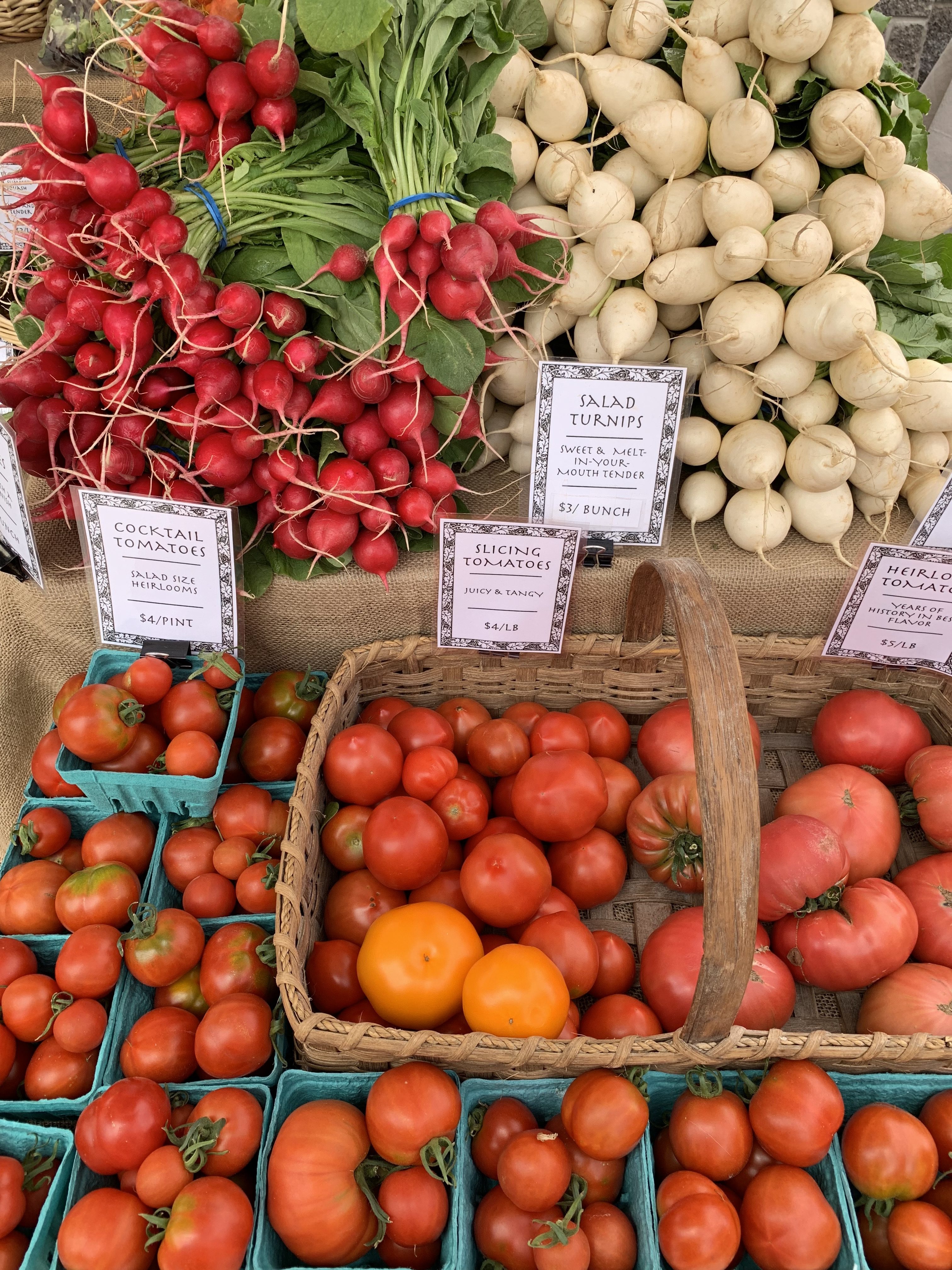
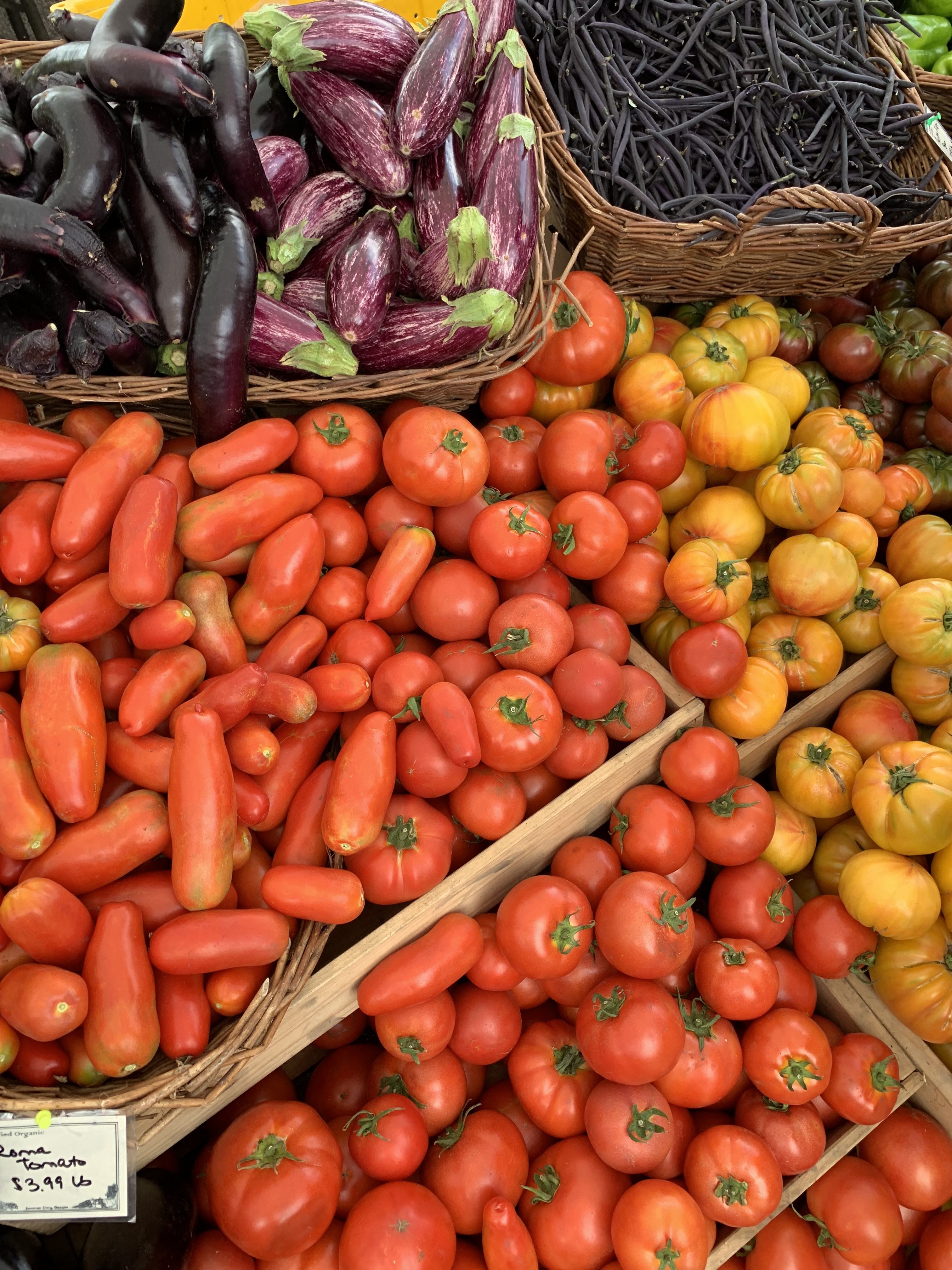
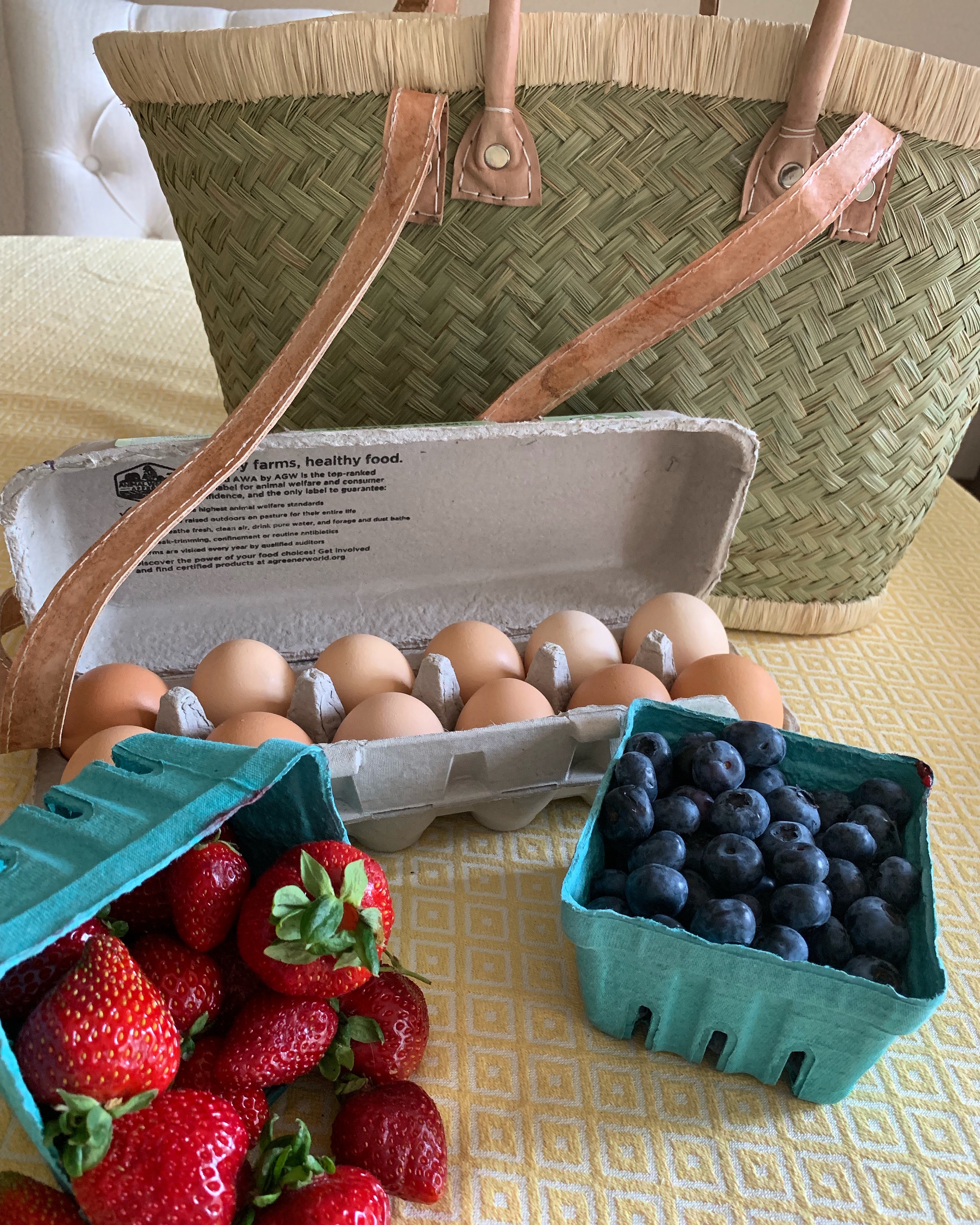

 ~Subscribe to
~Subscribe to 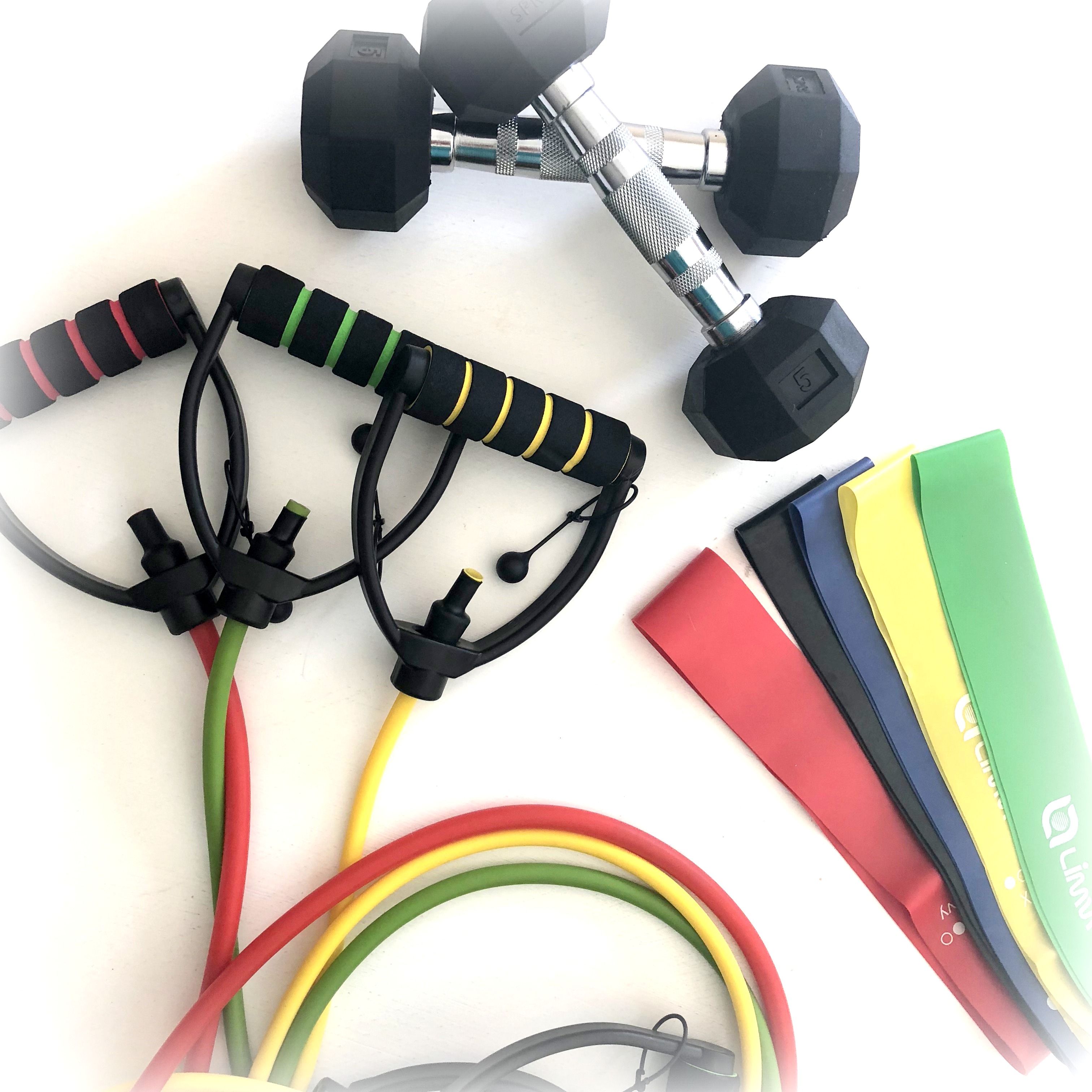
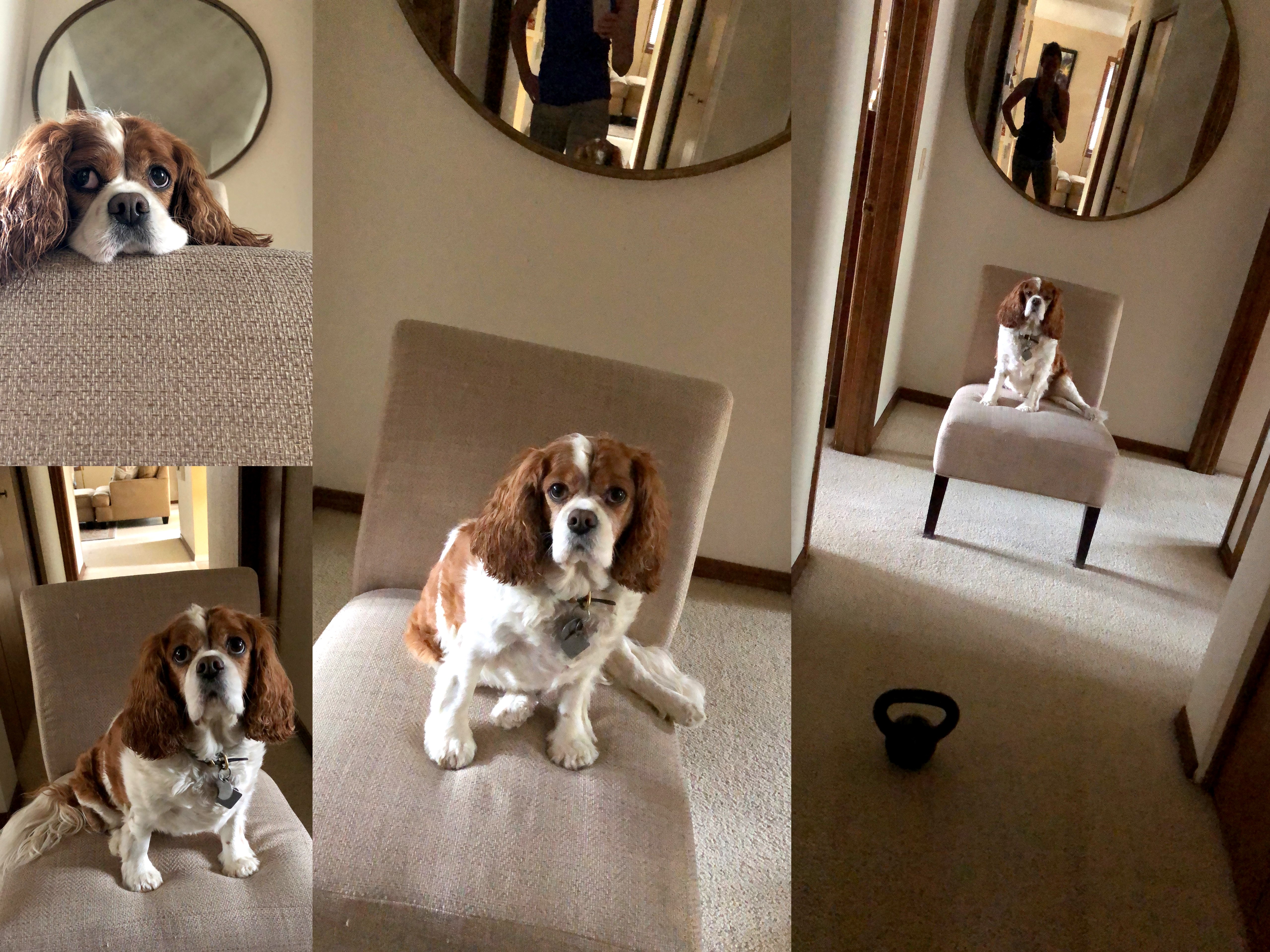
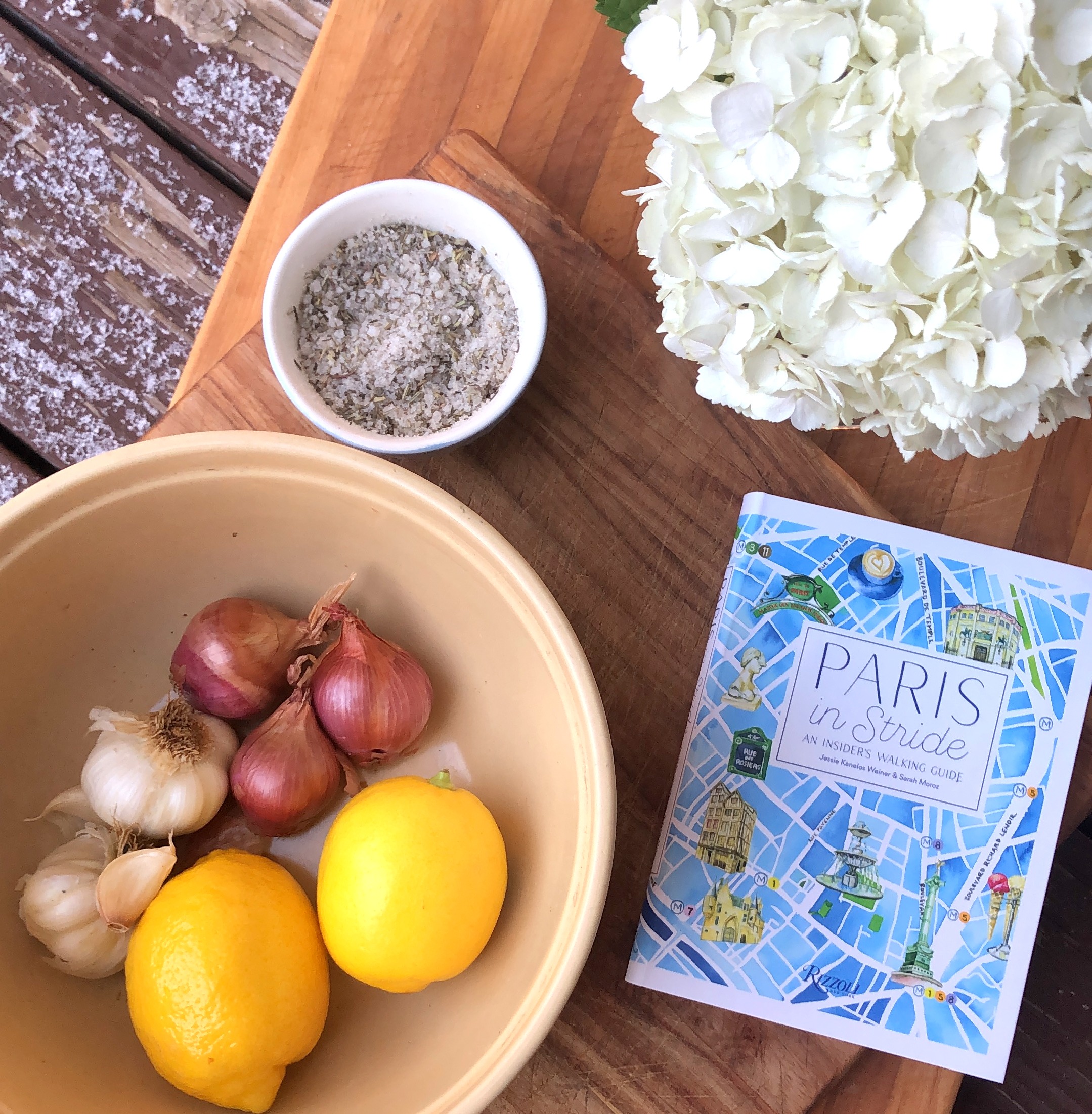




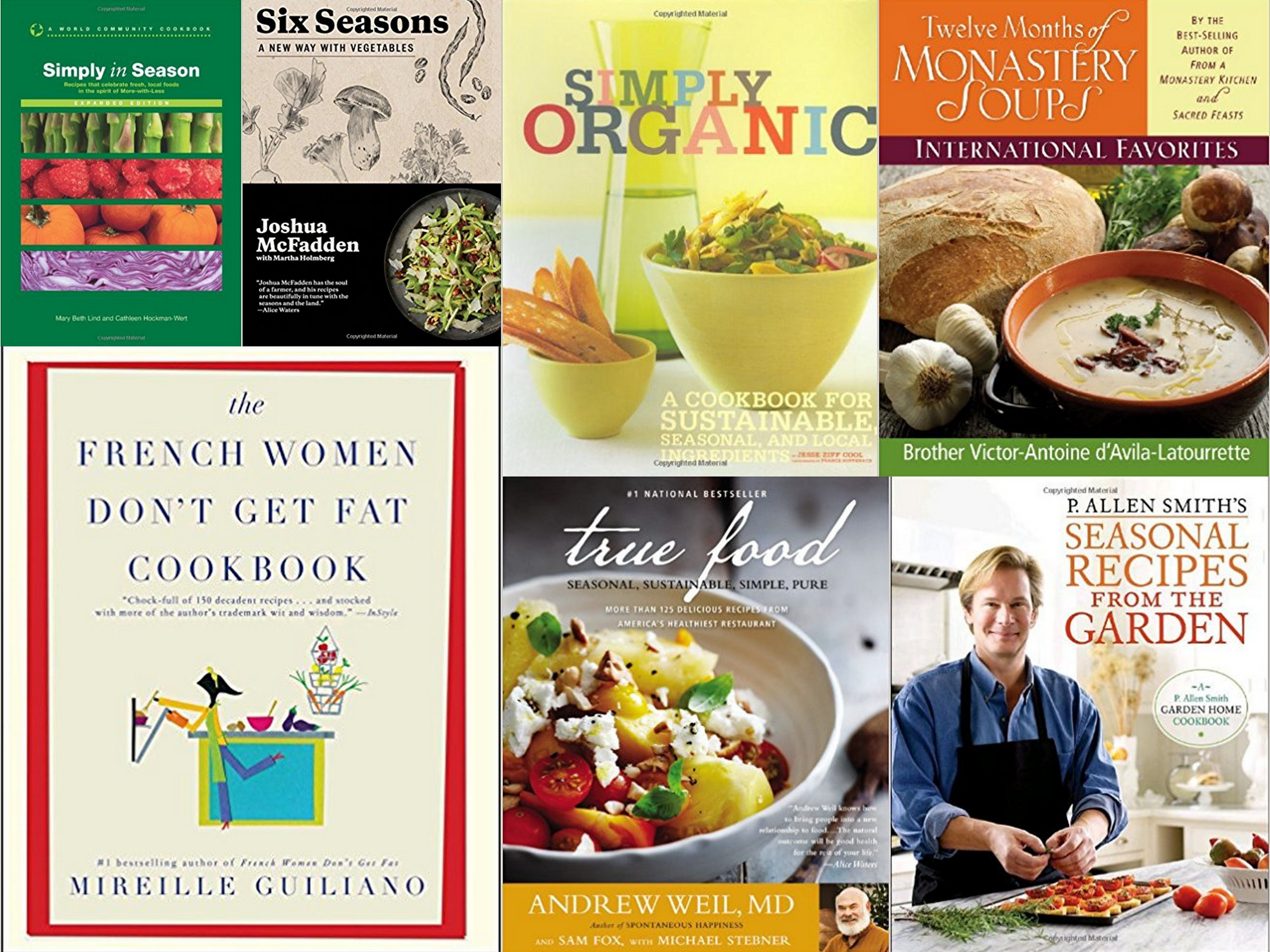
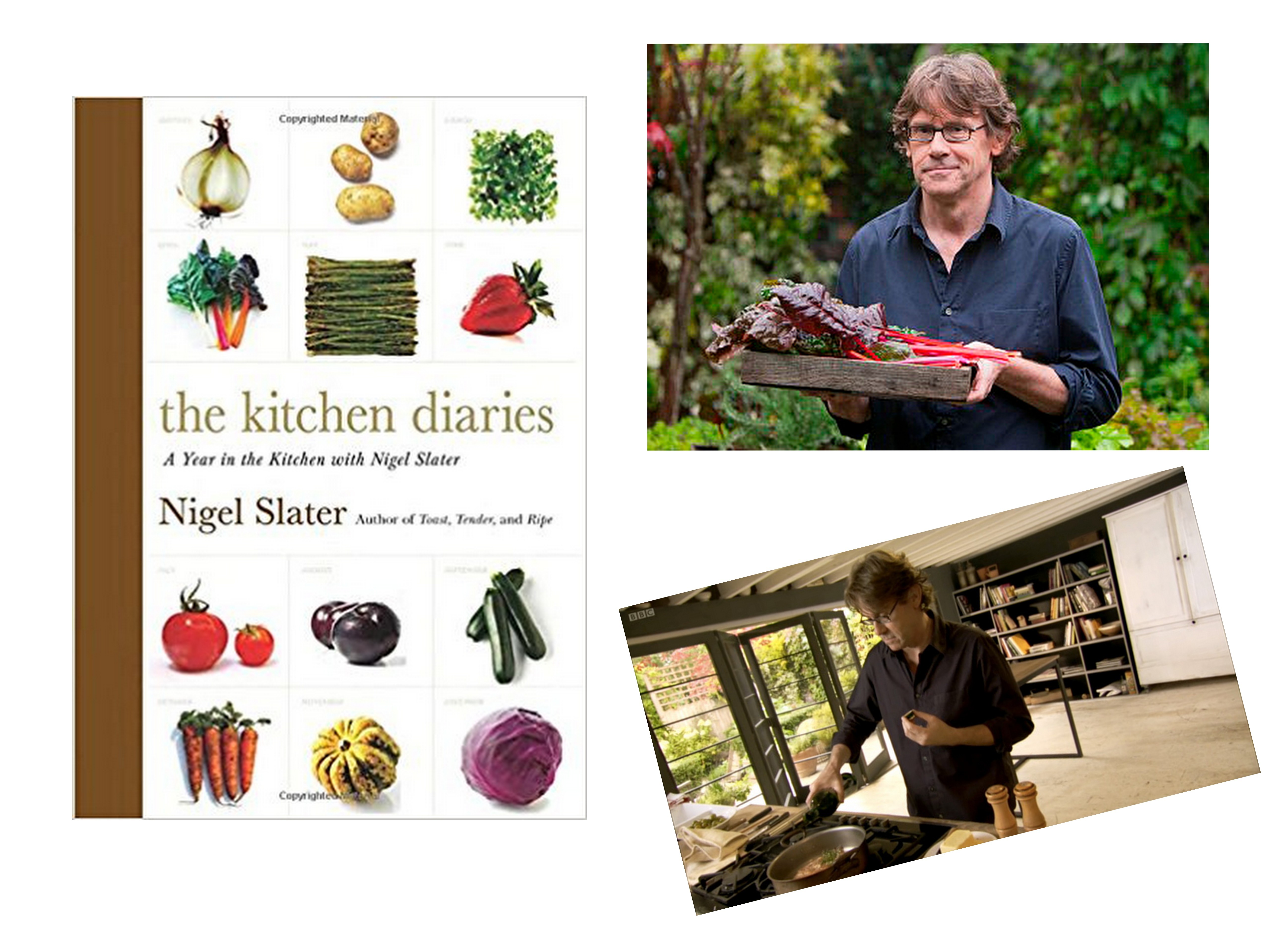

 SHOP Equipment Pajamas: [show_shopthepost_widget id="2336799"]
SHOP Equipment Pajamas: [show_shopthepost_widget id="2336799"]